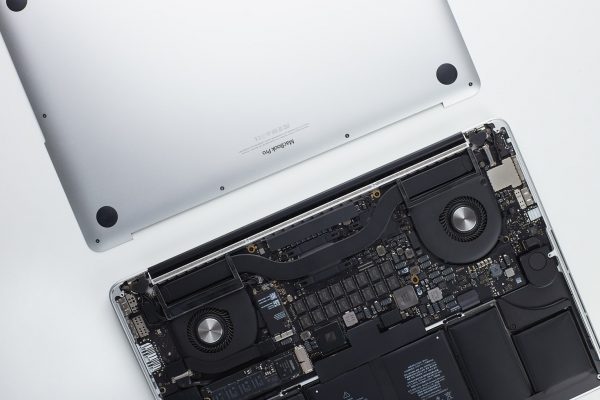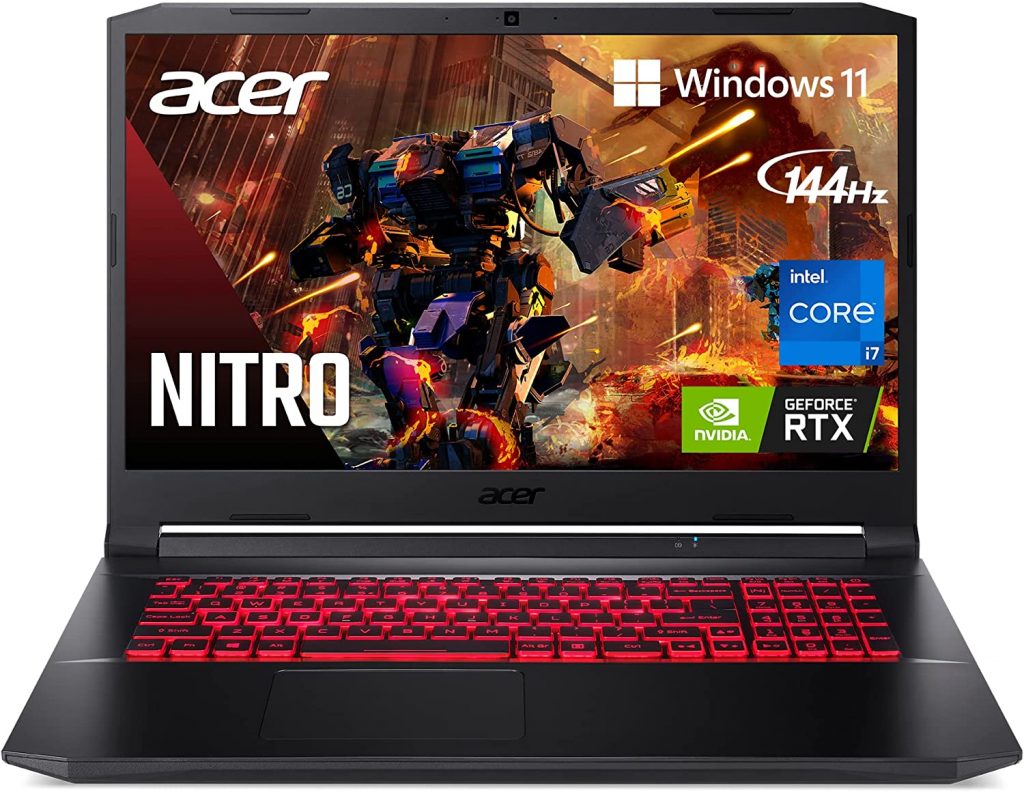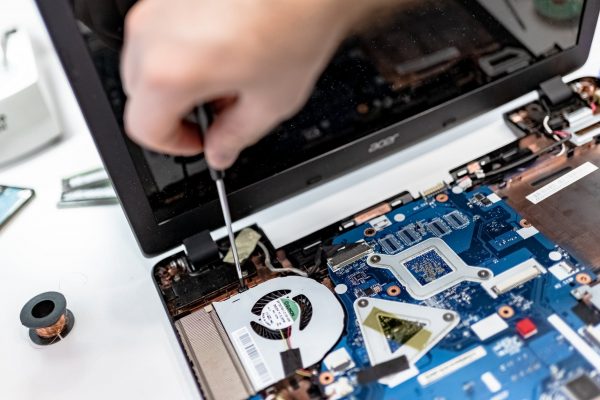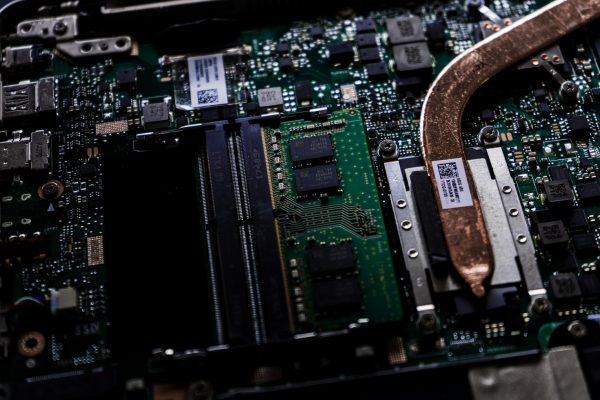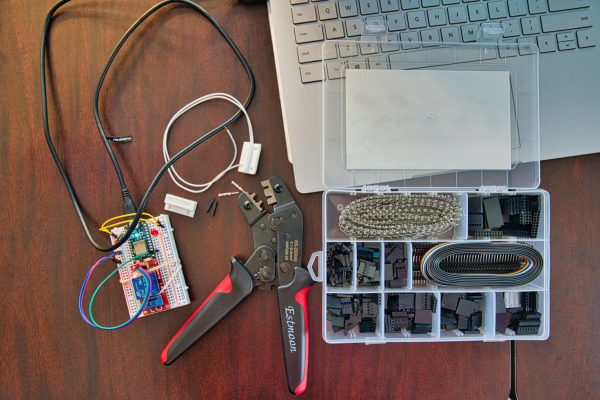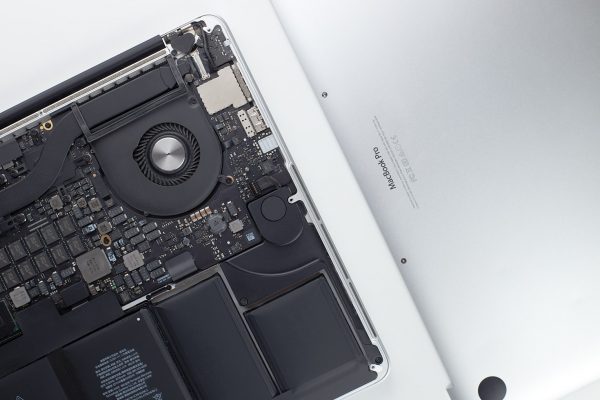Let’s take a look at some of the best modular laptops in the market and why they make for a great long-term investment.
What Is a Modular Laptop?
A modular laptop is specially designed to be upgraded with new hardware and software over time. The idea behind a modular laptop is having parts as individual units that can be removed or replaced at will without affecting other components. The replacement of individual or multiple parts can be done either in the spirit of an upgrade to improve the performance of a system, or to replace defective parts.
Advantages of a Modular Laptop
Modular laptops have a lot of advantages over their non-modular counterparts. The key advantage to modular laptops is that they tend to have a much longer lifespan compared to the average laptop that usually lasts between three to five years. Modular laptops are also more cost-efficient than standard laptops in the long run since you can get by using the same parts and simply replacing the parts that require an upgrade. In addition, you also get the benefit of being able to customize your laptop as your use case and personal preferences change. Modular laptops are also a lot friendlier to the environment due to their expanded lifespans. In many ways, modular laptops are very similar to refurbished laptops. Both types of laptops are more economical and eco-friendly, except that modular laptops are often sold as brand new items while refurbished laptops are sold as second-hand items. Either way, modular and refurbished laptops are part of an emerging sub-sector in the electronics industry that focuses on the concepts of consumer freedom, sustainability, and cost-efficiency.
Modular vs Standard Laptops
The main difference between modular laptops and normal laptops is that modular laptops have detachable components. Most of the components on standard laptops are soldered directly into the motherboard, rendering them impervious to upgrades. While the exact causes have yet to be identified, speculation tends to favor manufacturing costs and compatibility issues as the cause. Nevertheless, opening up the hardware of a laptop to replace parts comes with inherent risks. The risk has to do with compatibility issues; the upgraded components will end up incompatible with a laptop’s software or hardware. While the accidental installment of an incompatible component will likely not affect your system, it can be a waste of money. Having said this, the truth is that not all components can be replaced even with modular laptops. Most manufacturers go out of their way to keep people away from their components, especially the most sensitive ones. And so far as laptops are concerned, anything whose system memory (RAM), hard drive, secondary storage, or battery can be replaced is already considered modular.
7 Best Modular Laptops with Upgradeable Components
There are probably thousands of laptop models out there, and they come from different manufacturers from all over the world. The sheer number of options can make it very difficult to identify which laptops are modular and which are not. Having said this, we tried to compile a list of laptops offering a modular build to help you select one for the long term. Let’s take a closer look at the best options:
Modular Laptops Have Limited Upgradeability
Display and Graphics
The Framework Laptop has a screen that measures 13.5-inches and has a 3:2 ratio, which means that it’s more square-shaped than the common widescreen display. The screen features a maximum resolution of 2256×1504, with a lighting factor of around 400 nits for a vibrant and bright display. This is an indication of a standard 1080p at 60fps performance, which is about the average for any gaming laptop. Its 55Wh battery can last for up to ten hours on a full battery.
Product Modes
The framework has two product mods: pre-built configuration or DIY edition. The pre-built configuration is intended for people who are less willing to get their hands dirty with detailed customization. Nonetheless, there is still a level of customization involved as users are asked to select a processor, memory card, and connectivity type. Other facets of the laptop such as display size, resolution, graphics card, battery, and power adapter, are not customizable. In contrast, the DIY option is intended for people who like to customize and build their laptops from the ground up. It allows users to bring to the table their components or otherwise select components from the Framework Marketplace. In the DIY version, the motherboard comes preassembled. However, other components such as the NVMe SSD, Wi-Fi card, and system RAM arrive in their little boxes for manual setup.
Modularity
Regardless of the product mode that you choose, Framework remains a modular laptop and therefore, its components can be replaced. For starters, removing a motherboard is usually a difficult or even impossible process with other laptops, but Framework makes it easy. Once you have access to the motherboard, you can already pull out components like the RAM, CPU, and RAM for replacement. Other components such as the Wi-Fi card, battery, display, and keyboard are marked with QR codes you can scan come time to look for parts to replace them with. These components arrive individually packaged for you to install into the motherboard. Instead of building ports into the body of the laptop, Framework gives its users the freedom to decide which ports to plugin. There are four bays available, and you can mix and match the type of ports you want. The list of ports currently supported by the laptop includes microSD, USB-A, USB-C, HDMI, DisplayPort, fast 250GB/1TB expansion cards, headphone amp, or more. The ports are also packaged individually for you to install into your computer.
Display and Graphics
This modular laptop’s display has 4K UHD resolution at 3840x2400p for high-end visuals. It further displays at a 16:10 aspect ratio for a widescreen view. It also features an RGB color and VESA display for displaying colors in images with pinpoint accuracy. The Dell XPS 15 is necessarily outfitted with high-end processors to keep up with the most demanding games as a gaming laptop. The combination includes an Nvidia GTX 1650 Ti graphics driver, 4GB of VRAM, and an Intel Xe GPU. The Intel Xe GPU can deliver up to the Iris Xe graphics that can feature up to 1080p 60fps, making it your best bet for more casual games.
Key Specifications
Configurations for laptop memory vary, but the benchmark will get you 8 GB of memory and a 256 GB solid-state drive. Both memory types can be upgraded for a reasonable cost. An upgrade may be necessary to accommodate more demanding games. For example, paying an extra hundred dollars can double your memory to 16 GB.
Modularity
Aside from its functions as a gaming laptop, Dell XPS 15 is also considered a modular laptop that can be upgraded to a degree. Because in reality, you can only upgrade a handful of components on the laptop. That includes the SSD, RAM, and wireless card. The laptop retails slightly upwards of USD 1,000. While this price point may seem excessive, a closer look at the unit’s features and specs may convince you otherwise.
Design and Graphics
Because despite the plain and minimalistic appearance of the laptop, the reality is that it is packed with powerful features. It features a 17.3-inch display at full HD (1,920-by-1,080-pixel) resolution at 1080p. This combination makes it great for playing high-end games as well as HD movies. Not to mention, the screen reflects just the right amount of brightness at 302 nits.
Key Specifications
At the heart of Nitro 5’s high-powered setup is the eight-core, 3.2GHz AMD Ryzen 7 5800H CPU with 16GB of DDR4 RAM and a 300 MHz base and 200 MHz boost clock. With a TDP average of 45W and added support for faster system memory, this processor delivers an extra-snappy experience. Graphics-wise, the unit depends on the powerful performance of the GeForce RTX 3080 GPU with 512GB SSD. This GPU is designed to deliver 8K up to 60fps and 4K at 120fps. It also has an insanely efficient TDP of 320W, which translates to a higher capacity for performance scaling. Also read: How to Increase FPS and Optimize Your PC for Gaming
Modularity
Aside from offering a powerful combination of hardware, the Acer Nitro 5 is also highly configurable. Again, not all components can be replaced, but the few ones that can are the most crucial to performance. Its RAM, SSD storage, the graphics card can be replaced, as well as the keyboard and trackpad. It also features M.2 slots that you can fill with M.2-type expansion cards.
Design and Display
The Ideapad S340 features a 15.6-inch display with a maximum resolution of 1920 x 1080p and an aspect ratio of 16:9. At the top of the screen is a webcam with a cover for extra privacy. Thin plastic bezels barricade the perimeter of the laptop, making it look like a movie screen more than anything. The whole unit weighs a total of 1.6kg, which is the standard for a laptop this size.
Key Specifications
When it comes to the meat of the pie, this one is equipped with a dual-core Intel Core i3-8145U processor. This processor offers a much higher memory size and bandwidth compared to the average. Operationally, it can churn out an average clock speed of 3.9GHz with a maximum memory size of 64GB. Graphics are handled by the laptop’s Intel UHD Graphics 620 GPU, an integrated-type graphics unit that promises a 1080p at 4K performance. This graphics card runs at a frequency of 300 MHz, which can be boosted to up to 1000Hz when power and temperature permit. This combination should make it okay for running casual games, but it would not be fair to expect it to match the performance of a dedicated gaming GPU. The device also offers 128GB SSD storage and 8GB of RAM, both of which will contribute to faster performance. As a bonus, the manufacturers have added in an extra SD card slot for additional storage. The slot has an adaptive design, meaning it can accept different types of memory cards, including SD/SDHC, MMC, Memory Stick, and MS Pro cards.
Modularity
The laptop’s modular design makes it easy to remove the back cover to replace certain parts. The components that are most likely to meet the modular criteria include the RAM, HDD, SDD, battery, keyboard, and trackpad.
Design and Display
The MSI GL65’s 15.6-inch anti-glare display features a 1920×1080p maximum resolution. This resolution rate offers clear and crisp images similar to those displayed on HD televisions and Blu-ray videos. The panel’s refresh rate is pegged at 60fps, which is more than sufficient for most games. In consonance with the graphics card, the display delivers a deluxe visual quality for both works and play.
Key Specifications
At the heart of the MSI GL65 is the blazing fast 7th Gen Intel Core i7-7820HK processor. Its 64-bit architecture can support more than 4 GB of RAM and allows you to run 64-bit applications for increased performance. Equipped with the latest quad-core processors with a clock speed of 3.90 GHz, it will no doubt be able to keep up with even the most demanding games. The unit also has the unique ability to stay cool and quiet even when handling demanding tasks. Graphics-wise, the MSI GL65 runs on the 4GB GeForce GTX 1650, a Turing architecture-based graphics card. Its classification as a Turing-based graphics card renders it more efficient than its predecessor, the Pascal GTX 1050. This graphics card combines the AMD Ryzen technology with the latest graphics driver for a consistent 1080p performance.
Modularity
The MSI GL65 can be disassembled for repair or parts replacement. You can unscrew the laptop’s back panel to get to the components, though not all of them are removable. A few of the parts that you can remove include the RAM, HDD, SDD, battery, keyboard, and trackpad.
Design and Display
The Helios 300 offers sharp and well-defined visuals that almost feel like they are popping out of your screen. The laptop displays at a maximum resolution of 1920x1080p with a standard aspect ratio of 16:10. On the subject of luminosity, the screen tops off 280 nits, which is neither too bright nor too dim. Topping off the list is a refresh rate of 144Hz, which is more than enough to make even the most chaotic games appear seamless and visually coherent.
Key Specifications
With the Intel Core i7-10750H paired with a powerful 8GB DDR4 RAM, this unit is more than capable of running most video games, even the most demanding ones. The six-core, 12-threaded processor operates with a base clock speed of 2.6GHz, which you can increase to 5GHz. Additionally, it operates on a 45W TDP for a higher capacity to handle more data in less time, as well as an extra 12 MB of L3 cache for that extra push. At the heart of the laptop is a 6GB NVIDIA GeForce RTX 2070 Max-Q, paired with a 1TB NVMe SSD for storage. The Max-Q is a power-saving variant of the mobile RTX 2070 graphics card and is one of the models that run on the Turing architecture. Like other members of the Turing family, the Max-Q comes with features like deep learning super sampling (DLSS) and real-time ray tracing for more realistic lighting effects.
Modularity
Other than its core specifications, another great thing about the laptop is that some components are completely modular and can be replaced. Both the GPU and CPU are soldered into place, but you can increase your GPU power by connecting to an external GPU. Acer also included an empty M.2 SSD slot and a 2.5-inch drive bay for additional storage. Truth be told, there are a handful of versions of the Vivobook 15 in the market, each coming in with its specs and price point. Nonetheless, all of them cost well below the USD 800 mark. We’re interested in the variant that runs on the AMD Ryzen 7 3700U processor for this review.
Design and Display
The VivoBook 15’s’s 15.6-inch screen features a maximum resolution of 1920 x 1080p, which allows it to deliver high-end visuals for both games and movies. The new NanoEdge design of the laptop gives it a nearly frameless look, except that the top bezel is noticeably thicker as it supports the laptop’s webcam. The screen has an RGB color gamut to deliver a wider spectrum of colors vividly. Perhaps the one thing they could have improved on is that the screen is a little bit too dim, with brightness measuring a mere 205 nits.
Key Specifications
This laptop is powered by the octa-core AMD Ryzen 7300X CPU that clocks in at 3.6GHz. The Ryzen 7300X isn’t quite as demanding as other processors when it comes to resources, but it is still perfectly capable of running demanding applications. It offers support for a fourth-generation PCI Express interface and AMD’s latest architecture, Zen 2. The processor is supplemented with 512 GB of SSD storage for an extra performance boost. Graphics-wise, the laptop runs with the Radeon RX Vega 8, an integrated graphics solution that clocks in at 110MHz. This graphics card can handle smooth gameplay for moderately demanding titles. This unit is also very conservative when it comes to its power consumption and is also compatible with DirectX12, an API that handles Windows-based systems. The graphics unit is paired with 16GB of DDR4 RAM to cater to all of your multitasking needs.
Modularity
Another good thing about the Asus Vivobook 15 is that it is upgradeable. There are only a few screws between you and the parts you can replace, including the RAM, HDD, SSD, and battery. Sensitive parts like the GPU and GPU cannot be upgraded as they are securely attached to the motherboard. Manufacturers in the past few years have been very secretive about the modularity of their components for reasons that we will explore later. Most would go out of their way to block access to most of their computer parts, especially the more sensitive and crucial components like the CPU and GPU. While some manufacturers do allow for GPU upgrades, it can only be accomplished with an external connection. Most CPUs cannot be upgraded at all, and having a damaged CPU is pretty much a death sentence for the entire laptop. Having said this, the reality is that there are very few laptops that can be considered modular in the strict sense of the word. Most of the so-called modular or upgradeable laptops are highly limited in their capacity to be upgraded. Most only ever offer up peripheral components for an upgrade. Naturally, there will be differences in the combination of upgradeable components across models and brands. But some of the more common components include the RAM, ROM, HDD, SSD, and battery.
How to Determine Which Components Are Upgradeable
Before you even purchase a laptop, you should note whether or not they have components that they replaced. Most manufacturers won’t provide this information out of the box, which means you’re going to have to do your digging, both literal and figuratively. So how can you know if your laptop is upgradeable, and which components can be upgraded? Here are a few methods you can try:
1. Check the Hardware Interface
Laptops, whether for casual or gaming purposes, essentially look the same underneath and hardware-wise. A typical sign that a particular component can’t be replaced is that it is soldered or attached securely to the motherboard. The easiest way to determine the parts of the laptop that can be upgraded is to look at the chassis. Before you can get to the inner sanctum of your computer, you’re going to have to get a reliable screwdriver. A Phillips screwdriver normally does the trick, but then again not all laptops are sealed with the same type of screws. Depending on your laptop model, you may need another type of screwdriver, including a star-head type of a Torx. After preparing your tools, you will need to shut down your laptop and remove all cords attached to it. On top of a desk or other flat surface, you will need to place the laptop upside down on a towel or other soft material to protect it from scratches. You can then proceed to unscrew each screw until you can take out the back panel. It’s also advisable to use small trays or dishes to segregate the screws according to the sections that you pulled them out from. Once the back panel is free from the laptop, you should be able to inspect the components and know whether they can be removed or not. As a general rule, the soldered components are best left alone. Breaking through anything that is held together by glue or metal is far too brutal for the delicate components of your computer. You might end up breaking a component or even the motherboard, which can mean the end for your laptop.
2. Use a Configurator Tool
Another way to find out if your laptop is upgradeable is by using a configurator tool like Crucial Memory’s Advisor tool. Navigate to Crucial Memory’s official webpage and select the specifications of your laptop from the drop-down menus. You will be asked to identify your laptop’s manufacturer, product line, and specific model. The software will then tell you about your laptop’s specifications, including your CPU, GPU, RAM, SSD, HDD, and so on. It will also tell you how you can get to the components of your laptop through the hardware, as well as the arts of the computer can’t be upgraded. The information should be enough to help you prepare for upgrading the components.
3. Check the Maintenance Manual
Knowing that your computer is upgradeable is one thing, but knowing how to go about accessing those parts on your computer is another. Just like with any trip to an unfamiliar place, you’d want to check on a map to find the most efficient route. In the case of your laptop, the access routes are indicated in the maintenance manual (aka service manual). Manuals like this can delineate the steps you need to take to access specific components of the computer you want to replace. Most manufacturers keep digital copies of the service manual from every laptop model that they have released. As such, you’re going to have to dig around the manufacturer’s official website to look for the service manual for your unit. Keep an eye out for downloadable manuals, specifically the service or hardware guide, and not the general instructions. The maintenance manual should offer the series of steps that you need to take to remove and replace various components. It will also tell you which components are soldered into the motherboard and which are not. This is one way of knowing which components you can replace without actually digging into the hardware interface.
How to Determine if the CPU or GPU Are Upgradeable
While most manufacturers prefer to keep the more crucial components soldered, a select few are less protective of their CPUs and GPUs. But how do you tell that these components can be upgraded? Here are some of the methods you can try to find out:
1. Check the Packaging Method
The first sign of whether a CPU can be upgraded relates to the packaging method. If the CPU has been packed in using the PGA packaging method, then the chances are that these components can be pulled out and replaced. On the other hand, BGA packaging solders internal components into the motherboard, which means they can’t be upgraded. You can check the packaging method by using a reliable benchmarking program for CPUs and GPUs.
2. Check the Specifications
An MXM interface is another indication that the parts can be removed; otherwise, they are embedded into the motherboard. You can check this detail from the parts or specifications manual, which is usually available from the manufacturer’s website.
3. Check for Integrated Status (GPU)
Some GPUs are integrated, meaning they are part of the CPU, and share the same resources as the CPU. Integrated GPUs are soldered into the motherboard along with the CPU, which means they cannot be upgraded. The only way to upgrade it would be to remove the motherboard or have a professional install a separate graphics card. Most casual laptops make use of integrated GPUs due to their lower cost, but the same would not ideally work on gaming laptops due to the high resource requirements of the latter. This only goes to show that if your particular use case or intention is gaming, then you are likely better off with a gaming laptop than an office laptop.
4. Check the Hardware Interface
If you don’t have a way of checking the specifications of your laptop, you might be left with no other choice but to dig into the motherboard. The process is not that different from opening up the back of your phone, except that there are a lot more screws to deal with and a lot more components to greet you on the inside. Once you’ve opened up your system, you can already test the components gently to find out which ones can be pulled out. If a component sticks to the motherboard when pulled, chances are that it can’t be upgraded.
Why Do Manufacturers Solder Components?
Most laptops have very limited upgradeability, and we know that by the way that the components are packed into the unit. But why do manufacturers solder components in the first place? There are a handful of possible explanations, though most of these are based on speculation rather than fact. The first reason has to do with the limited space on the laptop; sticking the components together is just an efficient way to get them to fit inside the laptop’s constrained space. Another potential reason relates to consumer interest and protection; manufacturers need a way to ensure that their products are not tampered with or stolen during the selling process. By soldering key components, they can preserve the physical integrity of their product. But perhaps the most practical reason has to do with risks associated with compatibility issues. The manufacturers want to prevent people from plugging in replacement parts that could easily be incompatible with the laptop’s hardware or software. While accidentally plugging in an incompatible device may not permanently harm the laptop, it can be a huge waste of money. This brings us to a potential justification that has to do with the demand for upgradeable components. Because in reality, the number of people who actually enjoy piecing together computer parts, or otherwise have the technical know-how to do it properly, are few and far between. Still, conspiracy theorists claim the reason to be related to planned obsolescence. This theory claims a capitalistic agenda; that limiting access to components forces consumers to replace their laptops at a much faster rate. The main idea is that repairs are financially bad for business and must be suppressed. But then again, there are other equally feasible reasons to consider.
What Is the Right to Repair?
The right to repair is a political movement that pushes for complete access to a product, with the right to have it repaired through means not dictated by the manufacturer. It demands consumer freedom in decision-making, access to information, as well as physical components with consumer products that have been purchased. The right to repair movement is often associated with the electronics sector as a form of criticism against the monopoly of the industry over repair protocols. The electronics sector is also likely the most affected by the radical changes spurred by the legislation. But the truth is that it applies to all sectors that deal with consumer products, including food production, packaged goods, healthcare, automobiles, beverages, and so on. Over the past few years, the movement has grown from simple advocacy to full-blown political reform, spurring the passage of state-based legislation across the US. So far, a variety of states in the US have already passed right-to-repair laws, including Tennessee, Massachusetts, Nebraska, and New York. While the legislation varies in detail, the central precepts are the same. For starters, it bars manufacturers from setting rules for repair which includes terms for “unauthorized repair” which voids most warranty agreements. Second, it will obligate manufacturers to provide access to all parts of a product or software upon the request of the customer. For example, a laptop manufacturer can no longer solder sensitive components to prevent access. The law will also compel the manufacturer to provide complete information relevant to a product (e.g., repair manual or parts manual). Additionally, manufacturers will be compelled to provide spare parts to third parties, including repair centers as well as consumers, whenever necessary. In response, many manufacturers have already started offering spare parts in their shops and websites.
Final Thoughts on the Best Modular Laptops With Upgradeable Components
These upgrade-focused laptops cover different price points and use cases, as there are options for both casual use and gaming. Another key consideration would be specifications, and at this point, we have to go out on a limb and say mid-range laptops may score better on upgradeability than high-end ones. While the highest-end laptops may have the best specs, they are also expensive and can be difficult to upgrade over time — unless, of course, they have components that are easy to find or have their own source of spare parts like Framework. Then, it might be wiser to get a mid-range laptop with average or above-average specs whose components match up with spare parts abundant in the market. In any case, just for a laptop that you are most comfortable with and which you think has the best potential for longevity and upgradeability.
